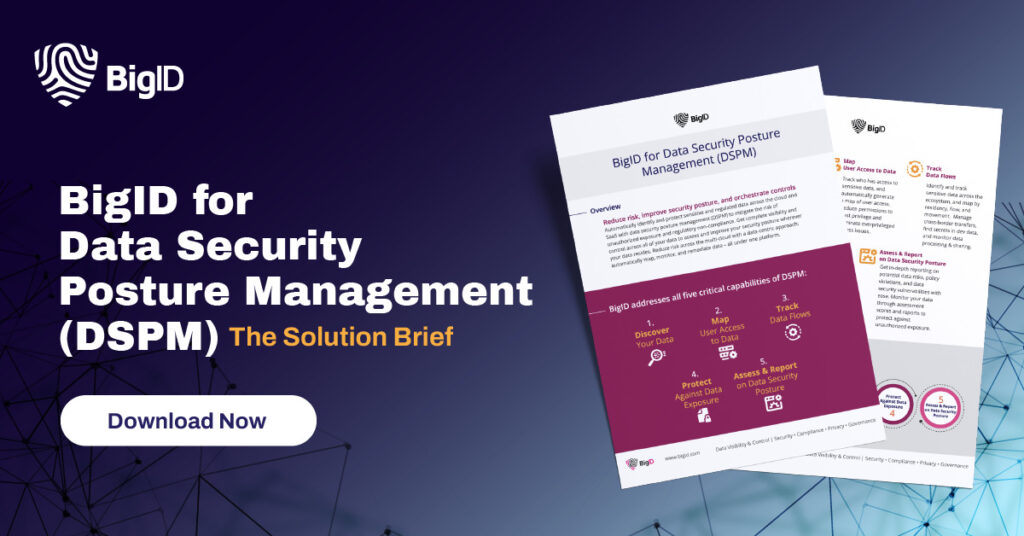Mastering Data Security Posture Management: An In-Depth Exploration
Mastering Data Security Posture Management: An In-Depth Exploration
In today’s digital landscape, where data breaches and cyber threats continue to escalate, organizations face immense challenges in ensuring the security and integrity of their sensitive information. One crucial aspect that has emerged in recent years to address these concerns is Data Security Posture Management (DSPM). DSPM refers to the practice of continuously monitoring and managing an organization’s data security posture, essentially providing a holistic view of the organization’s overall security status. With the ever-increasing volume and complexity of data, mastering DSPM has become a top priority for businesses across industries. Take an In-Depth Look at Data Security Posture Management for more insights.
Effective DSPM implementation can have significant impacts on an organization’s data security. By providing real-time insights into vulnerabilities and weaknesses in the security infrastructure, organizations can proactively detect and mitigate potential threats. This not only helps in preventing data breaches but also facilitates compliance with various data protection regulations. Furthermore, DSPM enables organizations to optimize their security investments by identifying redundant or unnecessary security controls, thus streamlining and enhancing the overall security posture.
Moving forward, this article will delve into the key takeaways in mastering Data Security Posture Management. We will explore the essential elements of a robust DSPM strategy, discuss best practices for implementation, and highlight the potential challenges organizations may encounter along the way. Understanding these key takeaways will empower businesses to fortify their data security posture, safeguard their sensitive information, and stay ahead in the ever-evolving landscape of cyber threats. So, let’s dive in and discover the critical aspects of mastering Data Security Posture Management.
key Takeaways
1. Data Security Posture Management (DSPM) is essential for businesses to protect their sensitive data and effectively manage security risks. It involves continuously monitoring and assessing security controls, identifying vulnerabilities, and remediation of weaknesses to maintain a strong security stance.
2. DSPM solutions provide comprehensive visibility into an organization’s security posture by aggregating data from various sources such as vulnerability scanners, network devices, and cloud platforms. This enables organizations to gain actionable insights, prioritize security efforts, and make informed decisions to address potential threats.
3. Automation plays a crucial role in DSPM by automating security processes, reducing human errors, and improving response times. With automated workflows, organizations can streamline security operations, ensure compliance, and quickly respond to security incidents or vulnerabilities.
4. Continuous monitoring is a fundamental aspect of DSPM, allowing organizations to proactively identify and mitigate security risks. By continuously monitoring their security posture, organizations can detect anomalous activities, analyze trends, and respond in real-time to potential threats, minimizing the impact of security incidents.
5. Integration and collaboration across different security tools and functions are critical for effective DSPM. By integrating various security tools and leveraging technologies such as Artificial Intelligence (AI) and Machine Learning (ML), organizations can enhance their security posture, improve threat detection capabilities, and respond more efficiently to security events. Regular collaboration between IT, security teams, and business stakeholders is also crucial to ensure that security measures align with business objectives and evolving threats.
What are the key strategies to master data security posture management?
Understanding Data Security Posture Management
Data security posture management refers to the process of proactively assessing and managing an organization’s overall data security posture. It involves evaluating the effectiveness of security controls, identifying vulnerabilities, and implementing appropriate measures to mitigate risks. By mastering data security posture management, companies can enhance their defense against potential cyber threats and maintain the confidentiality, integrity, and availability of their data.
The Importance of Data Security Posture Management
In today’s digital landscape, where data breaches and cyber attacks are becoming increasingly prevalent, organizations cannot afford to overlook the importance of data security posture management. It is crucial for businesses to have a comprehensive understanding of their security posture to identify potential weaknesses and take necessary actions to protect their sensitive data. By mastering data security posture management, organizations can stay one step ahead of cybercriminals and safeguard their valuable information.
Key Elements of Mastering Data Security Posture Management
1. Regular Security Assessments
Regular security assessments are essential for mastering data security posture management. These assessments involve evaluating the effectiveness of existing security controls, identifying vulnerabilities, and determining potential risks. By conducting periodic assessments, organizations can stay updated on the current state of their security posture and make informed decisions regarding necessary improvements.
2. Continuous Monitoring
Continuous monitoring plays a vital role in mastering data security posture management. It involves actively monitoring and analyzing security events, logs, and network traffic to detect any unusual or suspicious activities. By implementing robust monitoring tools and techniques, organizations can quickly identify and respond to potential security incidents, thereby reducing the impact of any security breaches.
3. Vulnerability Management
An essential aspect of data security posture management is effective vulnerability management. This involves regularly scanning and assessing systems, applications, and network infrastructure for vulnerabilities. By promptly patching or fixing identified vulnerabilities, organizations can minimize the potential for exploitation and strengthen their overall security posture.
4. Incident Response Planning
A crucial element of mastering data security posture management is well-defined incident response planning. Organizations should establish clear procedures and guidelines for responding to security incidents, including steps to take in case of a data breach. By having a robust incident response plan in place, organizations can minimize the impact of security incidents and ensure a timely and effective response.
5. Security Awareness Training
Investing in security awareness training for employees is imperative for mastering data security posture management. It is essential to educate employees about security best practices, potential risks, and their role in maintaining a secure environment. By fostering a culture of security awareness, organizations can significantly reduce the likelihood of human error leading to data breaches or unauthorized access.
What are the important tips to enhance your data security posture management?
1. Stay updated with the latest security threats and vulnerabilities to address them proactively.
2. Implement multi-factor authentication to add an extra layer of security to your systems and applications.
3. Regularly backup your data to ensure business continuity in case of a security incident.
4. Enforce strong passwords and password management policies to prevent unauthorized access.
5. Encrypt sensitive data both during storage and transmission to prevent unauthorized disclosure.
6. Implement network segmentation to limit the potential impact of a security breach.
7. Regularly review and update security policies and procedures to adapt to evolving threats.
8. Stay compliant with relevant industry regulations and standards to ensure data security.
9. Conduct periodic security awareness training sessions to educate employees about security best practices.
10. Collaborate with cybersecurity experts and consultants to ensure a robust data security posture.
Frequently Asked Questions
1. What is data security posture management?
Data security posture management refers to the process of assessing and managing an organization’s overall data security posture. It involves evaluating and monitoring the security controls and policies in place to protect sensitive data.
2. Why is mastering data security posture management important?
Mastering data security posture management is crucial for organizations to safeguard their data from cyber threats and potential breaches. It helps identify vulnerabilities, assess risks, and implement necessary measures to maintain a robust security posture.
3. How does data security posture management differ from traditional security measures?
Data security posture management focuses on assessing the overall security posture of an organization and identifying gaps or weaknesses. Traditional security measures, on the other hand, usually involve implementing specific security controls or solutions to address known risks.
4. What are the key components of data security posture management?
The key components include continuous monitoring, risk assessment, vulnerability management, policy implementation, incident response planning, and regulatory compliance. These elements work together to maintain a strong data security posture.
5. How does automation play a role in data security posture management?
Automation is essential for efficient data security posture management. It helps streamline processes, perform real-time monitoring, and automate security assessments, enabling organizations to proactively address security risks and maintain a robust posture.
6. How can organizations improve their data security posture?
Organizations can improve their data security posture by regularly assessing vulnerabilities and risks, implementing security best practices, training employees on security awareness, investing in robust security solutions, and staying updated with the latest threats and industry standards.
7. What are some common challenges in mastering data security posture management?
Common challenges include resource constraints, complex IT environments, lack of visibility into all systems and data, managing third-party risks, and keeping up with evolving threats and compliance regulations.
8. Is data security posture management only relevant to large organizations?
No, data security posture management is relevant to organizations of all sizes. Regardless of the scale, all organizations need to protect their data and maintain a strong security posture to mitigate risks and prevent potential breaches.
9. How does data security posture management align with regulatory requirements?
Data security posture management aligns with regulatory requirements by helping organizations understand and implement necessary controls to comply with data protection regulations such as GDPR, HIPAA, PCI-DSS, etc. It ensures organizations meet the required security standards and avoid penalties.
10. Can data security posture management prevent all data breaches?
Data security posture management cannot guarantee the prevention of all data breaches, as cyber threats are constantly evolving. However, by maintaining a strong security posture, organizations can significantly reduce the risks and mitigate the impact of potential breaches.
Final Thoughts on Mastering Data Security Posture Management: An In-Depth Exploration
Mastering data security posture management is a crucial aspect of maintaining a secure environment for sensitive data. By continually assessing and managing the security posture, organizations can proactively identify and address vulnerabilities, reducing the likelihood of successful cyber attacks.
Investing in data security posture management not only protects the organization’s reputation but also ensures compliance with regulatory requirements. It is an ongoing process that requires dedication, constant monitoring, and adapting to emerging threats. By prioritizing data security posture management, organizations can enhance their overall security and protect their most valuable asset – data.









